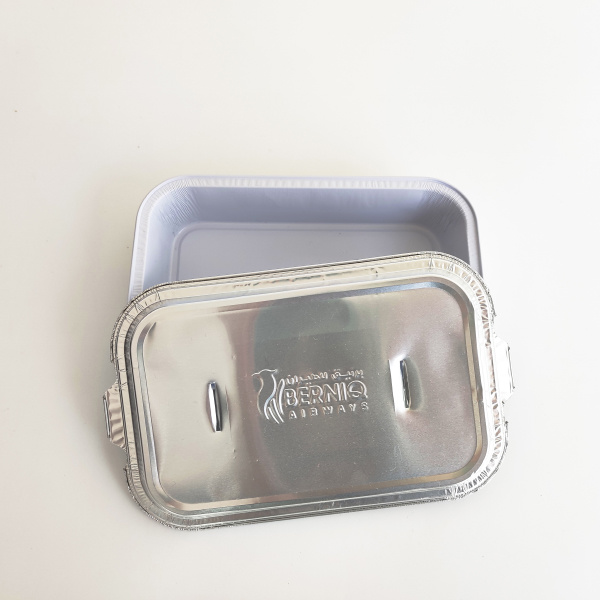Airline Aluminum Foil Food Containers vs. Plastic: A Comprehensive Comparison for Food Service
Release Time:
Oct 06,2025
Airline Aluminum Foil Food Containers vs. Plastic: A Comprehensive Comparison for Food Service
When it comes to food service, particularly in the airline industry, the choice between aluminum foil food containers and plastic alternatives plays a pivotal role. Both options have their own set of advantages and disadvantages, impacting not only the quality of food served but also the overall customer experience. In this article, we delve into a thorough comparison of airline aluminum foil food containers and plastic, enabling food service operators to make informed decisions tailored to their specific needs.
Table of Contents
- 1. Introduction: The Importance of Food Container Choice
- 2. Material Differences: Aluminum vs. Plastic
- 3. Durability: Which Container Lasts Longer?
- 4. Sustainability: Eco-Friendliness and Waste Management
- 5. Cost-Effectiveness: Budget Considerations for Airlines
- 6. Usability: Convenience for Food Service Staff
- 7. Customer Experience: Aesthetic and Functional Aspects
- 8. Conclusion: Making the Right Choice for Your Food Service
- 9. Frequently Asked Questions
1. Introduction: The Importance of Food Container Choice
The choice of food containers in the airline industry significantly influences operational efficiency and customer satisfaction. It is crucial to assess the specific needs of your food service and understand the characteristics of different materials. In this article, we will compare aluminum foil containers and plastic containers extensively, examining their performance in terms of durability, sustainability, cost-effectiveness, usability, and customer experience.
2. Material Differences: Aluminum vs. Plastic
Understanding the fundamental differences between aluminum and plastic is essential. Aluminum foil containers are made from thin sheets of aluminum, offering a lightweight yet strong option for food storage and transport. In contrast, plastic containers are typically made from various polymers, leading to a wide range of options in terms of strength, flexibility, and transparency.
2.1 Physical Properties
Aluminum is an excellent conductor of heat, which means it heats food evenly, aiding in food quality, especially in reheating situations. Plastic containers, on the other hand, may warp at high temperatures, which can affect their integrity and usability.
2.2 Thermal Insulation
Aluminum acts as a barrier to moisture and oxygen, preserving food freshness and flavor. Plastic containers can sometimes allow air and moisture to penetrate, potentially compromising food quality over time.
3. Durability: Which Container Lasts Longer?
Durability is a critical factor in food service. Aluminum foil containers are known for their strength and resistance to bending, puncturing, and leaking. This makes them a reliable option for transporting hot and heavy meals. Plastic containers, while they can be sturdy, may crack or break under considerable weight or pressure, leading to spills and waste.
3.1 Handling and Transportation
When it comes to handling and transportation, aluminum containers outperform plastic. Their rigid structure ensures safe stacking and storage during transit, reducing the risk of damage. Plastic containers can become deformed or damaged if not handled carefully, increasing the likelihood of service disruptions.
4. Sustainability: Eco-Friendliness and Waste Management
With growing environmental awareness, sustainability is a prominent concern in the food service industry. Aluminum is recyclable and can be reused multiple times without degrading its quality, making it a more sustainable option compared to single-use plastic containers, which contribute significantly to landfill waste.
4.1 Recycling Processes
The recycling process for aluminum is well-established, and the material can be recycled indefinitely. Conversely, while some plastics are recyclable, many types are not, and the recycling rates remain low globally. Choosing aluminum can enhance an airline's commitment to sustainability and reduce its carbon footprint.
5. Cost-Effectiveness: Budget Considerations for Airlines
Cost is always a significant factor in decision-making processes for airlines. While aluminum foil containers may have a higher upfront cost than plastic options, their durability and effectiveness in maintaining food quality can lead to savings in the long run. Additionally, the potential for waste reduction through recycling can further enhance cost-effectiveness.
5.1 Long-Term Investment
Investing in aluminum containers may seem more costly initially, but their longevity and recyclability can yield substantial savings over time. Airlines should consider the overall lifecycle costs, including factors like waste disposal and customer satisfaction, when evaluating container options.
6. Usability: Convenience for Food Service Staff
Usability is essential for the efficiency of food service operations. Aluminum containers are generally lighter and easier to handle than their plastic counterparts. They can also be stacked more effectively, saving valuable space in storage and during service.
6.1 Ease of Use
Aluminum containers often come with pre-formed lids, providing a secure seal that reduces the risk of spills. This ease of use enables food service staff to serve meals quickly and efficiently, enhancing the overall dining experience for passengers.
7. Customer Experience: Aesthetic and Functional Aspects
The presentation of food plays a crucial role in customer satisfaction. Aluminum containers offer a polished and professional appearance, adding an aesthetic value to the dining experience. Their ability to maintain heat and freshness also enhances the perceived quality of the meals served.
7.1 Customer Preferences
Research indicates that passengers prefer meals served in aluminum containers due to their capacity to retain heat and prevent moisture loss. This preference can significantly impact customer satisfaction and repeat business for airlines.
8. Conclusion: Making the Right Choice for Your Food Service
When comparing airline aluminum foil food containers to plastic alternatives, it's clear that each option has its strengths and weaknesses. Aluminum containers demonstrate superior durability, sustainability, and customer appeal, making them a compelling choice for airlines focused on providing high-quality food service. By understanding the unique benefits of each material, airlines can make informed decisions that enhance operational efficiency and passenger satisfaction.
9. Frequently Asked Questions
9.1 Are aluminum foil containers safe for food?
Yes, aluminum foil containers are safe for food storage and are commonly used in various food service applications. They are FDA-approved and do not leach harmful substances into food when used correctly.
9.2 Can plastic containers be recycled?
Many plastic containers can be recycled, but the recycling rates for plastics are significantly lower than that of aluminum. It is essential to check local recycling guidelines to determine the recyclability of specific plastic types.
9.3 Which containers are better for hot foods?
Aluminum foil containers are generally better for hot foods as they can withstand high temperatures without deforming. Plastic containers may warp or melt when exposed to heat.
9.4 How do the costs of aluminum and plastic containers compare?
While aluminum foil containers may have a higher initial cost, their durability and recyclability can lead to long-term savings. Plastic containers are often cheaper upfront but may incur additional costs related to waste management and lower customer satisfaction.
9.5 What impact do food containers have on customer satisfaction?
Food containers significantly impact customer satisfaction. Well-presented meals in durable, heat-retaining containers like aluminum are more likely to enhance the dining experience and lead to positive feedback from passengers.




